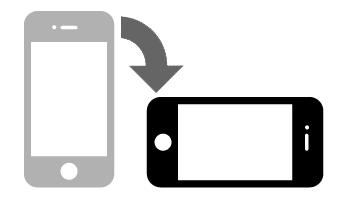
Output Area at SP905680: Occupancy rating for rooms
Location Type: Output Areas, ONS Geographic Code: E00138961
added to comparison list.
Key Facts
| All Residents | 308 |
| Male | 162 |
| Female | 146 |
| Households | 141 |
| Population Density (people/km2) | 964.9 |
Postcodes Covered
NN8 1AQ
NN8 1DA
NN8 1NH
NN8 1NQ
NN8 1RU
NN8 1RX
NN8 2YS
NN8 2ZJ
NN8 2ZP
NN8 3YY
NN8 4FD
NN8 4FQ
NN8 4TA
NN8 4ZT
NN8 6AY
NN8 6YA
NN8 9AW
NN8 9ER
NN8 9FW
NN8 9FY
NN8 9GH
NN8 9GJ
NN8 9GW
NN8 9HA
NN8 9HF
NN8 9HL
NN8 9HN
NN8 9HR
NN8 9JD
NN8 9JE
NN8 9JF
NN8 9JG
NN8 9ZZ
NN9 5GZ
NN9 5WH
NN9 5WN
NN9 5XX
NN9 5ZG
NN9 5ZU
NN8 9JZ
NN8 9JT
NN8 9LA
NN8 9LE
NN8 9JR
NN8 9LG
NN8 9JQ
NN8 9LH
NN8 9LJ
NN8 9LP
NN8 9LN
NN8 9LW
NN8 9LU
NN8 9LT
NN8 9LS
NN8 9LR
NN8 9LD
NN8 9LX
NN8 9LY
NN8 9LZ
NN8 9NA
-
Related Census Areas
Is within
Borders with
Overlaps with
Contains
No contained areas found
| Table Code | ts053 |
| Issued | 2023-01-06 |
| Unit of Measure | Household |
| Number of Response Options | 6 |
This dataset provides Census 2021 estimates that classify households in England and Wales by occupancy rating based on the number of rooms in the household. The estimates are as at Census Day, 21 March 2021.
Summary
Whether a household's accommodation is overcrowded, ideally occupied or under-occupied. This is calculated by comparing the number of rooms the household requires to the number of available rooms.
The number of rooms the household requires uses a formula which states that:
* one-person households require three rooms comprised of two common rooms and one bedroom
* two-or-more person households require a minimum of two common rooms and a bedroom for each person inline with the Bedroom Standard
People who should have their own room according to the Bedroom Standard are:
1. married or cohabiting couple
2. single parent
3. person aged 16 years and over
4. pair of same-sex persons aged 10 to 15 years
5. person aged 10 to 15 years paired with a person under 10 years of the same sex
6. pair of children aged under 10 years, regardless of their sex
7. person aged under 16 years who cannot share a bedroom with someone in 4, 5 or 6 above
An occupancy rating of:
* -1 or less implies that a household’s accommodation has fewer rooms than required (overcrowded)
* +1 or more implies that a household’s accommodation has more rooms than required (under-occupied)
* 0 suggests that a household’s accommodation has an ideal number of rooms
The number of rooms is taken from Valuation Office Agency (VOA) administrative data for the first time in 2021. The number of rooms is recorded at the address level, whilst the 2011 Census recorded the number of rooms at the household level. This means that for households that live in a shared dwelling, the available number of rooms are counted for the whole dwelling in VOA, and not each individual household.
VOA’s definition of a room does not include bathrooms, toilets, halls or landings, kitchens, conservatories or utility rooms. All other rooms, for example, living rooms, studies, bedrooms, separate dining rooms and rooms that can only be used for storage are included. Please note that the 2011 Census question included kitchens, conservatories and utility rooms while excluding rooms that can only be used for storage. To adjust for the definitional difference, the number of rooms required is deducted from the actual number of rooms it has available, and then 1 is added.
Quality Statement
It is inappropriate to measure change in number of rooms from 2011 to 2021, as Census 2021 used Valuation Office Agency data for this variable. Instead use Census 2021 estimates for number of bedrooms for comparisons over time.
| Occupancy rating for rooms: Total: All households | 141 |
|---|---|
| Occupancy rating of rooms: +2 or more | 42 |
| Occupancy rating of rooms: +1 | 54 |
| Occupancy rating of rooms: 0 | 41 |
| Occupancy rating of rooms: -1 | 3 |
| Occupancy rating of rooms: -2 or less | 1 |
 Bar chart not showing properly? Data with large numbers of options really needs a wider screen.
Try rotating your fondleslab into landscape mode and refreshing the page.
Bar chart not showing properly? Data with large numbers of options really needs a wider screen.
Try rotating your fondleslab into landscape mode and refreshing the page.

 Description
Description